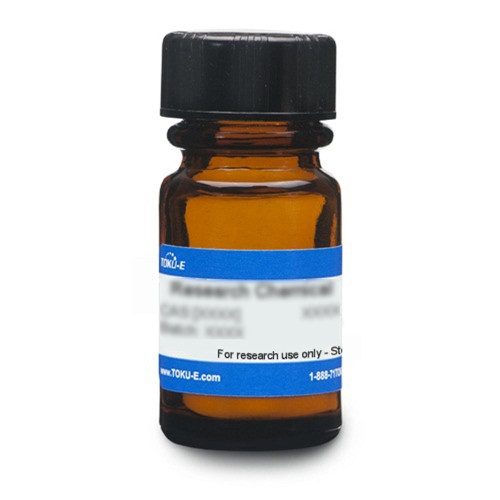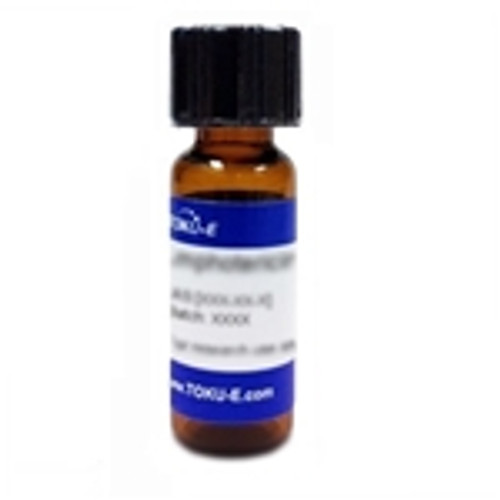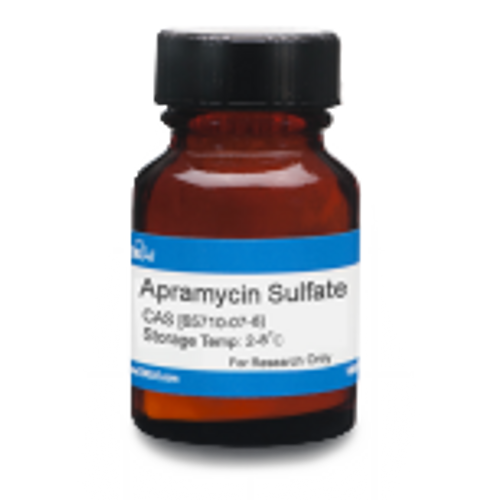Plazomicin Sulfate is a broad-spectrum, next-generation aminoglycoside synthetically derived from the natural product sisomicin. The compound was developed by Achaogen to combat multidrug-resistant Enterobacteriaceae, and later a generic version was marketed by Cipla USA. Synthesis involved appending a hydroxy-aminobutyric acid at position 1 and hydroxyethyl at position 6 to sisomicin. The addition of the hydroxyethyl makes it impervious to acetylation by Aminoglycoside Acetyltransferase 6'-N-Type 1b (AAC(6')-1b), the most prevalent AAC enzyme.
Plazomicin Sulfate is soluble in water.
| Mechanism of Action | Aminoglycosides typically bind to the aminoacyl-tRNA site (A-site) of the 30S ribosome bacterial and induce a conformational change to further facilitate the binding between the rRNA and the antibiotic. This leads to codon misreading and mistranslation of mRNA during bacterial protein synthesis.
Plazomicin is not affected by aminoglycoside-modifying enzymes (AMEs) such as acetyltransferases, nucleotidyltransferase and phosphotransferases, with the exception of aminoglycoside acetyltransferase aac(2')-Ia and aminoglycoside acetyltransferase aph(2″)-IVa AMEs are responsible for resistance seen in multi-drug resistant Gram-negative bacilli. Similarly to other aminoglycosides, Plazomicin is ineffective against bacterial isolates that produce 16S rRNA methyltransferases. |
| Spectrum | Plazomicin is active against Gram-positive and Gram-negative bacteria including carbapenem-resistant (CRE) and extended-spectrum beta-lactamase (ESBL) producing Enterobacteriaceae. Its enhanced Enterobacteriaceae activity is due to its stability to aminoglycoside-modifying enzymes that compromise the activity of traditional aminoglycosides. It is also active against methicillin-susceptible and methicillin-resistant Staphylococcus aureus. |
| Microbiology Applications |
Plazomicin is commonly used in clinical in vitro microbiological antimicrobial susceptibility tests, specifically MIC strips. Resistance to aminoglycosides may develop through over-expression of efflux pumps and ribosomal modification by bacteria, which results from amino acid or rRNA sequence mutations. Resistance in Enterobacteriaceae is via modification of ribosomal binding site due to expression of 16S rRNA methyltransferase. |
| Molecular Formula | C25H50N6O14S |
| References |
Cox et al (2018) Plaxzomicin retains antibiotic activity against most aminogycoside modifying enzymes. ACS Infect. Dis. 4(6):980-987 PMID 29634241 Eljaaly K, Alharbi A, Alshehri S, Ortwine JK, Pogue JM (2019) Plazomicin: A novel aminoglycoside for the treatment of resistant Gram-negative bacterial infections. Drugs. 79(3):243-269 PMID 30723876 Shaeer KM, Zmarlicka MT, Chahine EB, Piccicacco N, and Cho JC (2019) Plazomicin: A next-generation aminoglycoside. Pharmacother. 39(1):77-93 PMID 30511766 Tan L et al (2012) A high pH based reverse-phase high performance liquid chromatographic method for the analysis of aminoglycoside Plazomicin and its impurities. J. Pharm. Biomed. Anal. 66:75-84 PMID 222459505 Walkty A et al (2014) In vitro activity of Plazomicin against 5,015 Gram-negative and Gram-positive clinical isolates obtained from patients in Canadian hospitals as part of the CANWARD study, 2011-2012. Antimicrob. Agents. Chemother. 58 (5):2554-2563 PMID 24550325 |







